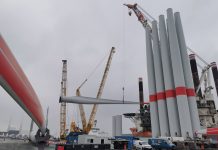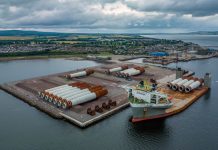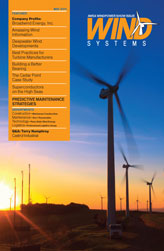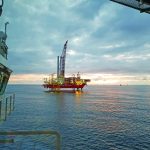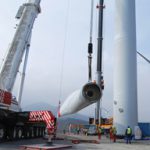In the April installment we discussed key steps to emergency preparedness, including preparing a written plan and communicating it both on- and off-site, developing a quick reference checklist, and establishing a project response team. In dealing with local emergency services, whether comprised of volunteers or paid staff, you can help by providing them with a clearly labeled map of the project with street addresses and numbered wind turbines. Most counties have an emergency preparedness coordinator who is a great resource, so start by contacting that individual for help in assessing available resources and how best to distribute communications to the local emergency services.
Reliable on-site communication is critical. Handheld radios are by far the most-used communication device on a wind project and a very important tool during emergencies. However, protocol for radio use must be established to ensure that those needing assistance can be heard openly and without other interruptions. When emergency situations arise, radio channels should be cleared to allow the response team to react. This also means that work will probably slow or possibly halt on the project, so you may need to have a plan to manage those no longer working. In addition, the construction workforce must understand how to access it and when to use emergency numbers such as 911. A dedicated person in the office or trailer should be used as the center point of communication to avoid multiple phone calls to 911.
Training and drilling your workforce is critical. When determining whether your construction team is prepared to handle an emergency situation there are two primary questions to consider: is your staff trained, and do they know how to respond? A confident “yes” can only be accomplished through training and executing mock drills. At a minimum, emergency response teams should be trained in basic first aid, automated external defibrillator (AED), cardio pulmonary resuscitation (CPR), fall protection, tower rescue, fire extinguisher use, hazard communications, and blood-borne pathogens. Once this essential training is complete your company must set up drills to have your emergency response teams practice responding to various emergency scenarios. In order for these drills to be most effective they must occur during the life of a construction project at the peak of the civil work, and then again at the peak of the turbine erection stage. It is important to remember that many people do not think clearly during emergencies and the only way to address panic and respond confidently is to create realistic drills that test the team. After a drill or real emergency it is important to look for aspects of the response that did not occur as desired. A “lessons learned” analysis should be completed to identify improvement areas, and updates to your program should occur.
Because wind turbines are built vertically, a rescue at high heights requires additional focus and training. When it comes to tower rescue you must use the “Keep It Seriously Simple” (KISS) method, which ensures that emergency response is simple, precise, and focused. If your organization does not have the necessary experience to develop an in-house tower rescue program, there are many companies available that specialize in training workforces specifically on tower rescue. However, do your research prior to hiring any training company, and do your best to define what you want and need beforehand. Many of these companies seek to sell additional “bells and whistles” that are not necessary during a tower rescue. Above all, your tower rescue needs to be simple and clear. When drilling your emergency response team on tower rescue you should discuss the potential scenarios associated with the construction of most wind projects, identify the most effective approaches to deal with those scenarios, and then explain how to configure emergency equipment in a simple fashion. As mentioned above, you must repeatedly practice with tower rescue equipment in order to maintain competency among your workforce on every wind project. Always rely on the KISS approach.
While these two columns only scratch the surface of emergency preparedness, there are three basic ideas that should be applied to any emergency scenario you might experience on a wind project: make sure you define your plan and process, communicate the plan to all involved and, finally, train and drill your workforce. These three simple steps can mean the difference between life and death. Waiting until an issue arises is too late, and when it comes to worker safety all of us have an obligation to our wind power workforce to be sufficiently prepared for emergencies. It can be a long road when you’re looking for help, so be prepared!
















